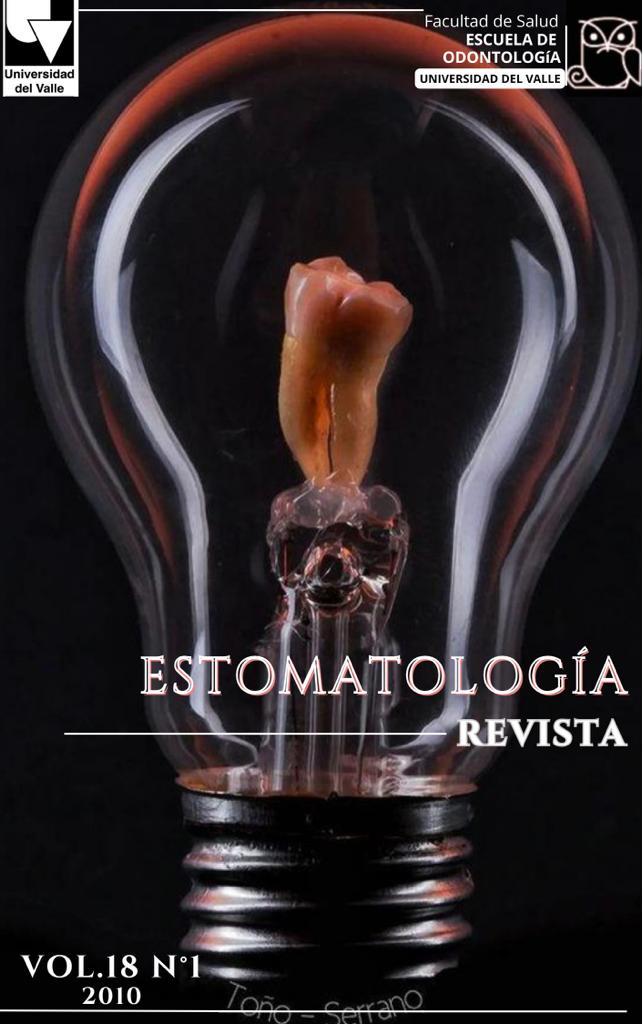Orthodontic management of patients with periodontal disease
Main Article Content
The orthodontic treatment for patients with periodontal disease has been debated for many years. At first, conservative treatments were proposed, where only periodontal surgical procedures were used to reestablish the function of the dentoalveolar complex that had been lost. Nowadays, it is possible to demonstrate that orthodontic treatment is not contraindicated in this type of patients if there are followed some management protocols and paradoxically orthodontics has become an option for solving many of the periodontal disease sequelae.
- Periodontal pocket
- sequelae of periodontal disease
- orthodontic management
2. Masella R, Chung P. Thinking Beyond the Wire: Emerging Biologic Relationships in Orthodontics and Periodontology. Seminars in Orthodontics 2008; 14:290-304.
3. Graber T, Vanarsdall R. Ortodoncia, Principios generales y técnicas. Ed. Panamericana 2003.
4. Jin LJ, Cao CF. Clinical diagnosis of trauma from occlusion and its relation with severity of pcriodomitis. J Clin Periodontol 1992; 19: 92-97.
5. Ong M.A., Wang H. Interrelationship between periodontics and adult orthodontics. J Clin Periodontol. 1998; 25:271-7.
6. Thilander B. Bolsas infraoseas pérdida de altura de hueso alveolar en relación con el tratamiento ortodóncico. Semin Ortho 1996; 2:55-61.
7. Lindhe J. Periodontologia clÍnica e implantologìa. Médica panamericana. 3 Ed. 2000.
8. Lindskog-Stokland B, Wennstrom J. Orthodontic tooth movement into edentulous areas with reduced bone height. An experimental study in the dog. Eur J Orthod 1993; 15:89-96
9. Mavreas D. Self-Ligation and the Periodontally Compromised Patient: A Different Perspective. Seminars in Orthodontics 2008; 14:36-45.
10. Palomo L, Palomo J, Bissada N. Salient Periodontal Issues for the Modern Biologic
Orthodontist. Seminars in Orthodontics 2008; 14:229-245.
11. Pontoriero R, Celenza F, Ricci G. Rapid extrusion with fiber resection: a combined orthodontic-periodontic treatment modality, Int J Periodontics Restorative Dent. 1987; 5: 31-43.
12. García-Fajardo C, Cacho A, Fonte A, Pérez-Varela JC. La oclusión como factor etiopatológico en los trastornos temporomandibulares. RCOE, 2007; 12:37-47.
13. Bach, N. Baylard JF. Orthodontic Extrusion: Periodontal Considerations and Applications. Journal of the Canadian Dental Association. 2004; 70:775-80.
14. Thilander B. Bolsas infraoseas pérdida de altura de hueso alveolar en relación con el tratamiento ortodóncico. Semin Ortho 1996; 2:55-61.
15. Kajiyama K, Murakami T, Yokota S: Gingival reactions after experimentally induced extrusion of the upper incisors in monkeys. Am J Orthod Dentofacial Orthop 1993; 104:36-47.
16. Shoichiro L, Taira K. Isolated Vertical Infrabony Defects Treated by Orthodontic Tooth Extrusion. The Angle Orthodontist. 2008; 78:728–736.
17. Cardaropoli D, Re S, Corrente G, Abundo R: Intrusion of migrated incisors with infrabony defects in adult periodontal patients. Am J Orthod Dentofacial Orthop. 2001; 120: 671-675.
18. Boyd RL, Quinn RS, Eakle WS, Chambers D. Periodontal implications of orthodontic treatment in adults with reduced or normal periodontal tissues versus those of adolescents. Am J Orthod Dentofacial Orthop. 1989; 96:191-9
19. Ong M, BDS, Wang H, DDS, Periodontic and orthodontic treatment in adults. Am J Orthod Dentofacial Orthop 2002; 122:420-8.
20. Da Silva V, Cirelli C. Intrusion of teeth with class III furcation: a clinical, histologic and histometric study in dogs. Journal of Clinical Periodontology. 2008; 35:807-816.
21. Mathews D. Kokich V. Managing Treatment for the Orthodontic Patient With Periodontal Problems. Semin Orthod 1997; 3:21-38.
22. Wennstrom, Jan. Consideraciones mucogingivales en el tratamiento ortodòncico. Seminars in Orthodontics. 1996; 2:46-54
23. Kokich V. Estetica: la conexión ortodoncia-periodoncia-odontologia restauradora. Seminars in Orthodontics. 1996; 2:21-30.
24. Lindauer S. Biological response to biomechanical signals: Orthodontics mechanics to control tooth movement. Seminars in Orthodontics. 2000; 6:145-54.
25. Wennström J, Stokland B. Periodontal tissue response to orthodontic movement of teeth with infrabony pockets. Am J Orthod Dentofacial Orthop. 1993; 103:313-9.
26. Zachrisson B. Implicaciones clínicas de las últimas investigaciones en ortodoncia-periodoncia. Seminars in Orthodontics. 1996; 2:4-12.
27. Bonugli, A. Consideraciones periodontales para ortodoncistas. Ortodoncia Clínica 2000; 3:36-41.
28. Cardaropoli D, Gaveglio L. Influence of Orthodontic Movement on Periodontal Tissues Level. Seminars in Orthodontics. 2007;13: 234-245.
29. Proffit W. Ortodoncia contemporánea, teoría y practica. Tercera edición, Ed Harcourt. Capítulo 20.
30. Thilander B. Orthodontic relapse versus natural development. American Journal of Orthodontics and Dentofacial Orthopedics 2000; 117:562-3.
31. Thilander B. Biological Basis for Orthodontic Relapse. Semin Orthod 2000; 6:195-205.
Downloads
Los autores/as conservan los derechos de autor y ceden a la revista el derecho de la primera publicación, con el trabajo registrado con la licencia de atribución de Creative Commons, que permite a terceros utilizar lo publicado siempre que mencionen la autoría del trabajo y a la primera publicación en esta revista.





